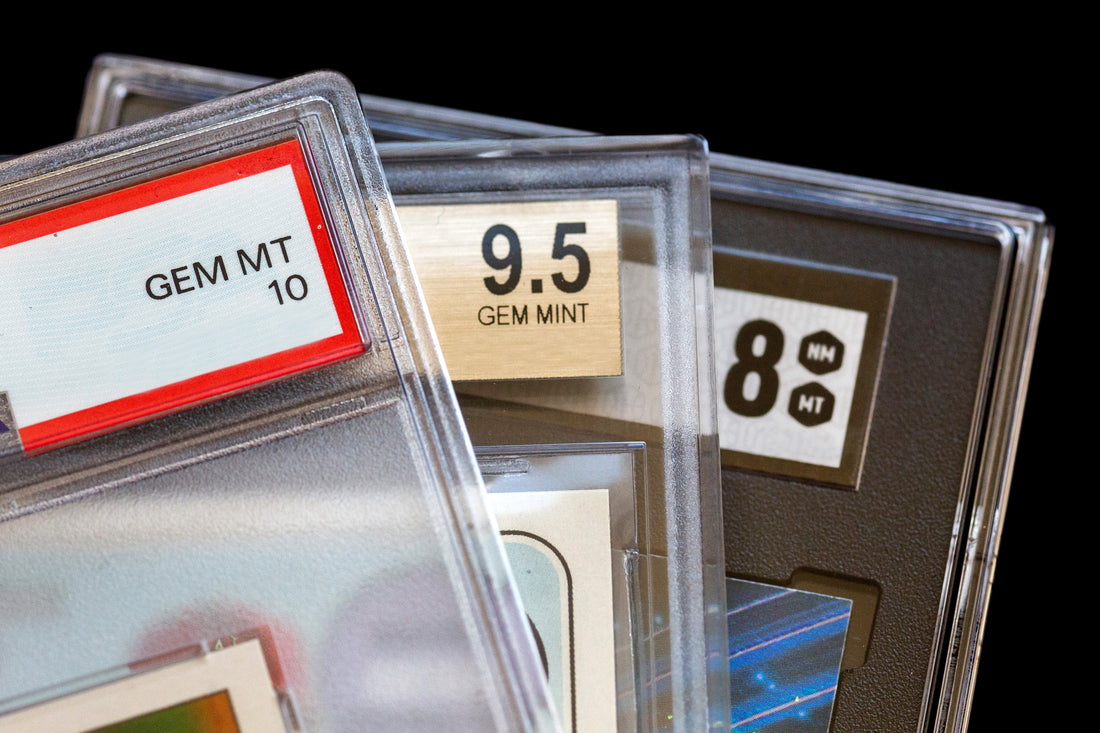
Understanding the Sports Card Grading Process and Its Impact on Card Values
Share
Sports cards have become more than just collectibles—they’re prized assets in the eyes of hobbyists, investors, and enthusiasts alike. In Sports Cards Chicago and beyond, graded cards attract greater interest and higher prices. But how exactly does card grading work, and why does it play such a pivotal role in the sports card marketplace? Let’s explore what grading entails and how it can radically influence a card’s value.
Why Card Grading Matters for Collectors and Investors
Card grading acts as a quality control checkpoint in the sports card hobby. By receiving an impartial, standardized rating, each card’s condition is documented for both current and future buyers. This process helps:
- Establish authenticity and identify counterfeits
- Determine and communicate a card’s condition transparently
- Bolster buyer and seller confidence
- Create market standards that support pricing and long-term investment
In the bustling Sports Cards Chicago scene, collectors increasingly seek out graded cards, knowing their purchases are backed by expert evaluation.
The Step-by-Step Grading Process
The card grading process follows a careful, multi-stage workflow that ensures consistency and accuracy.
1. Submission and Intake
Collectors start by selecting the cards they wish to grade, often focusing on rare, vintage, or high-value modern pieces. Cards are shipped to the grading company, typically with protective sleeves and careful packaging to reduce handling damage.
Once received, each card is logged, photographed, and assigned a tracking number. This documentation protects both the card and the submitter, forming a record for insurance and future reference. The intake step is especially crucial for collectors in vibrant communities like Sports Cards Chicago, where trade shows and group submissions are common.
2. Authentication
Before considering condition, authenticators verify the card’s legitimacy. They:
- Check printing methods and stock against known originals
- Examine ink, edges, and holograms under magnification
- Compare the card to historic records and exemplars
If a card is found to be counterfeit or altered (for example, if it has been reprinted or cut), it is flagged, and the grading process halts. This expertise is vital, especially for pre-1980s cards that are targets for illicit reprinting in the sports cards Chicago market.
3. Grading the Card’s Condition
Next, professional graders meticulously assess the physical condition, referencing a standardized scale—most commonly the 1 to 10 system, with higher numbers indicating better condition. Key criteria include:
- Corners: Sharpness, fraying, or denting
- Edges: Clean cuts, chipping, or bending
- Surface: Scratches, gloss, print defects, or stains
- Centering: Alignment of image and borders
Each category is scrutinized under magnification and strong lighting. Modern grading facilities often use digital tools, but human expertise remains central.
Common Grading Outcomes
- Gem Mint (10): Flawless under 10x magnification
- Mint (9): Virtually perfect, minor flaws only visible upon close inspection
- Near Mint/Mint (8): Slight imperfections, sharp overall appearance
- Lower grades (7-1): Increasing degrees of wear, creases, discoloration, or defects
4. Encapsulation and Labeling
Once graded, the card is sealed in a tamper-evident, clear plastic holder. The label displays the card’s details, serial number, and assigned grade. Encapsulation not only protects the card from environmental harm but also preserves its graded status for resale or display—an important feature for sports cards Chicago hobbyists attending shows or swapping collections.
5. Population Reports and Registry
Many grading firms maintain public populations and registries, listing how many cards of a particular issue have received each grade. This population data further informs card values—not just in Chicago’s bustling market, but nationally and internationally.
How Grading Directly Affects Card Values
The translation from grade to value is immediate and profound. In the competitive sports cards Chicago scene, high-grade examples often sell for multiples of the value ungraded or lower-grade versions fetch.
Increased Collector Demand
Buyers trust third-party assessments, and graded cards often enjoy stronger demand. A collector seeking a “rookie card” for display or investment will almost always gravitate to sealed, professionally graded specimens. The assurance of authenticity and condition reduces uncertainty and enhances the card’s appeal.
Value Multiples by Grade
- Cards graded Gem Mint (10) or Mint (9) can sell for several times the price of raw equivalents.
- As an example, a 1986 Michael Jordan rookie card in grade 10 regularly commands six-figure sums, whereas an ungraded or lower-graded card will fetch a fraction of that.
- Even among mass-produced modern cards, those with the highest grades tend to increase in value rapidly when players achieve milestones or local teams perform well—something particularly visible in Sports Cards Chicago, where fandom runs deep.
Liquidity and Marketability
Graded cards are much easier to buy and sell. Online marketplaces, card shows, and auction houses all prefer professionally graded cards, making their values more transparent and less subjective. This means sellers in Chicago and elsewhere can expect faster sales and competitive offers.
Factors That Influence Graded Card Values
Several elements beyond grade itself can affect pricing in the sports cards Chicago market:
- Player Popularity: Superstars like Michael Jordan or recent MVPs see greater demand.
- Card Rarity: Limited editions, serial-numbered releases, and vintage cards tend to command premiums.
- Historical Significance: Rookie issues, first appearances, or special event tie-ins attract extra attention.
- Population Count: High-grade cards with low population reports (i.e., few in existence) bring outsized value.
- Timing: Market demand can spike during playoffs or following record-setting performances.
All these factors interplay with the assigned grade to determine the card's perceived and real-world value.
Grading Costs versus Benefits
Grading isn’t free—it involves fees that scale with turnaround times and card values. Collectors in Sports Cards Chicago must weigh several considerations:
- For common cards or low-value autographs, grading fees may outweigh enhanced resale potential.
- For rare, high-value, or sentimental cards, the peace of mind and market liquidity gained from grading usually justify the investment.
Most submitters in the Chicago area aim to grade cards that are likely to come back as Near Mint or better, maximizing the jump in market value.
Frequently Asked Questions on Sports Card Grading
Is grading necessary for all cards?
No. Grading is generally reserved for cards thought to have significant value, historical importance, or sentimental attachment.
How do I choose a grading company?
Most collectors select established firms known for consistent standards and market respect. Reputation, turnaround times, and public population reports are key differentiators.
Can a card’s grade change over time?
The encapsulated grade is permanent, but cards can be resubmitted (at a fee) if collectors believe previous evaluations were inaccurate. Occasionally, tiny differences in grader judgment can lead to a different grade upon resubmission.
Where can I buy or trade graded cards in Chicago?
Sports Cards Chicago enthusiasts can attend local shows, visit hobby shops, or connect with online groups specializing in the local market.
Tips for Protecting Your Sports Cards Before Grading
- Handle cards with clean, dry hands or gloves
- Use penny sleeves and rigid top-loaders for transport
- Avoid stacking cards or exposing them to moisture or sunlight
- Keep cards in a secure, climate-controlled environment before submission
Attentive care helps ensure your cards earn the highest possible grades and maintain their value for years to come, especially in dynamic marketplaces like Chicago.
Conclusion
Card grading serves as the gold standard for establishing sports card authenticity and condition, unlocking greater value and confidence in every transaction. Whether you’re collecting or investing, understanding this process offers definite benefits—especially in the ever-growing sports cards Chicago community. Explore grading, protect your collection, and enjoy the elevated hobby experience that comes with it.
